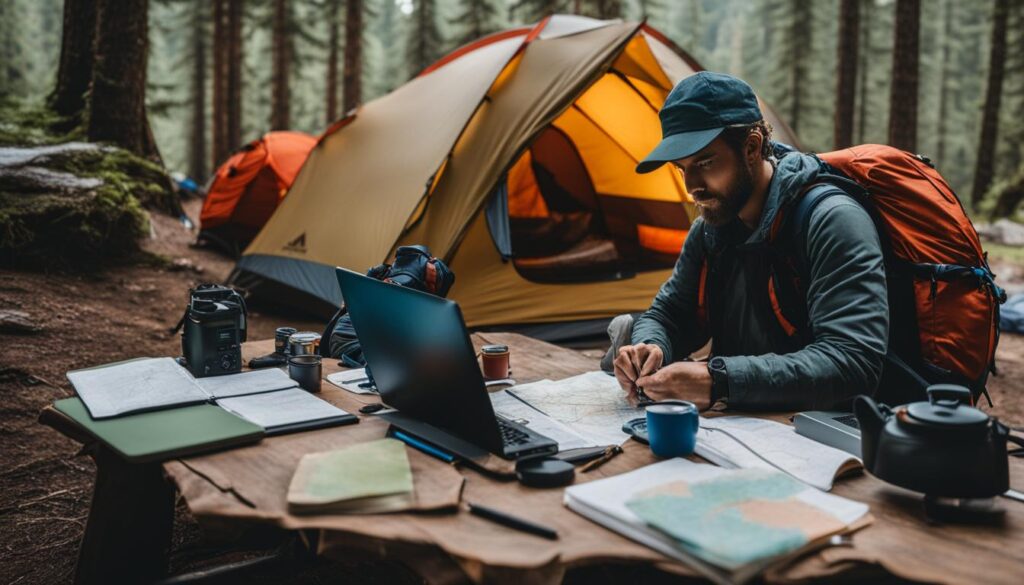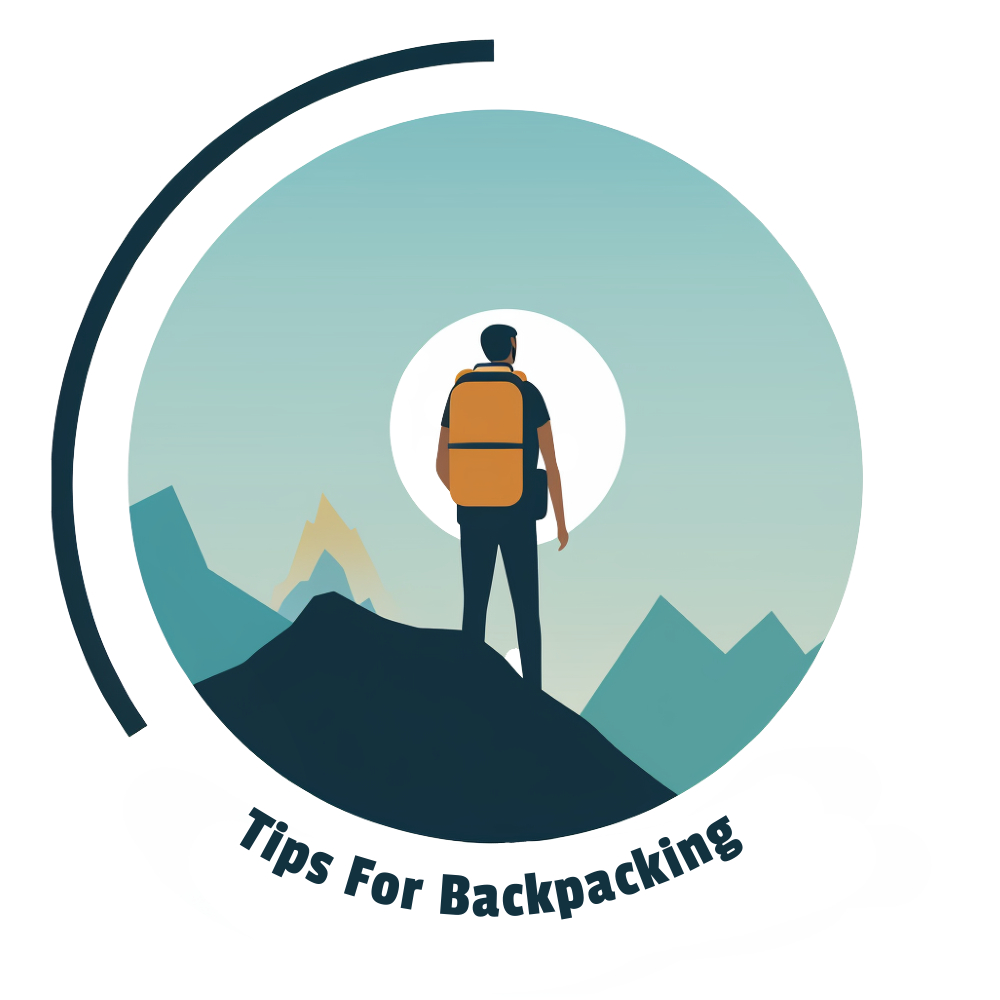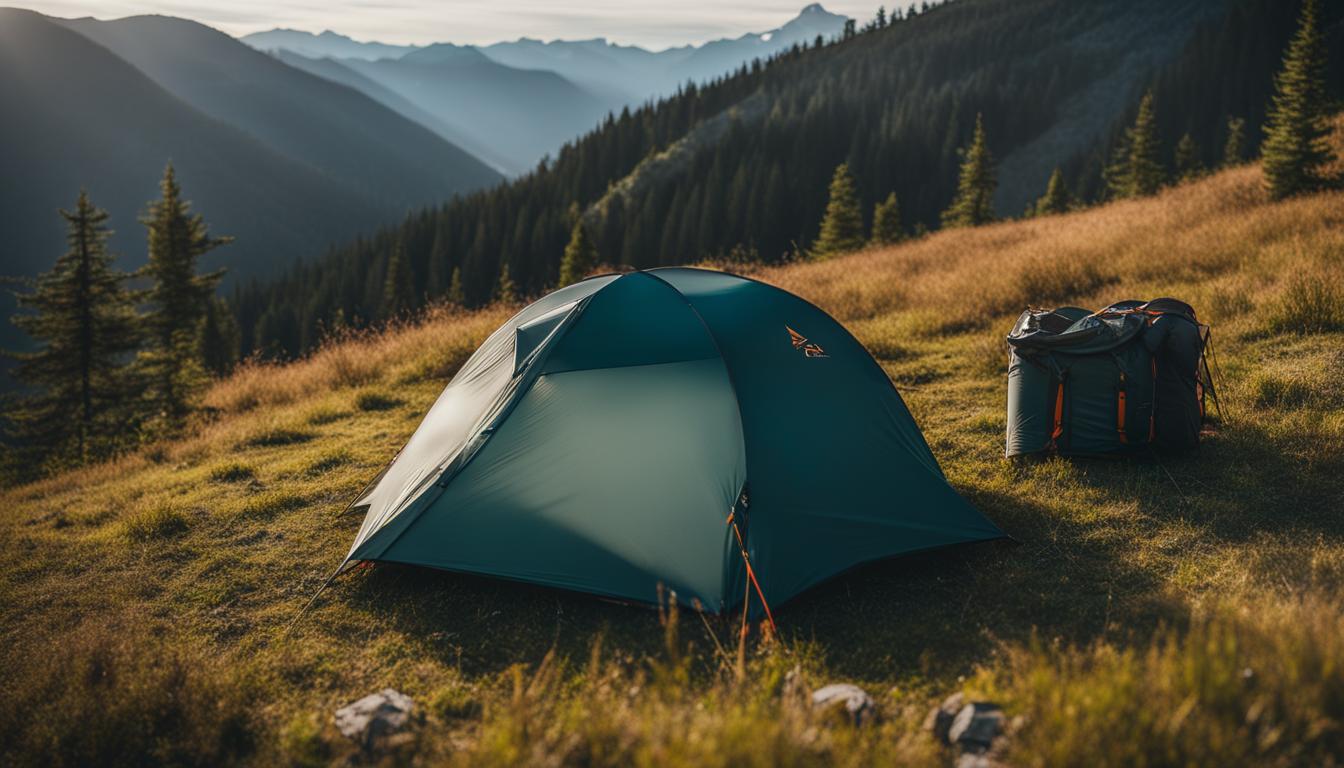Hey there, fellow adventurers! If you love the great outdoors and want to take your hiking game to the next level, then backpacking is the way to go. Picture this: exploring breathtaking landscapes, sleeping under the stars, and waking up to the sound of nature. Sounds amazing, right? Well, get ready because I’m about to share with you my quick and easy backpacking camp setup guide!
Before we dive into the nitty-gritty details, let’s start with the right mindset. Backpacking is basically hiking with overnight stays, so it’s important to pack the essentials to ensure a comfortable trip. To make things easier for you, here’s a breakdown of the minimum gear you’ll need:
- A shelter, like a free-standing tent, that provides protection from insects and critters
- A sleep system consisting of a sleeping bag, pad, and pillow for a good night’s sleep
- Food options such as a stove and freeze-dried packages for quick and easy meals
- A headlamp for visibility during nighttime adventures
- Hiking essentials like navigation tools, first aid supplies, and proper clothing
Now that you have the basics covered, let’s delve deeper into each aspect of setting up your backpacking camp. From choosing the right shelter to picking the best sleeping gear, I’ve got you covered!
Key Takeaways:
- Backpacking combines hiking with overnight stays.
- Essentials for a comfortable trip include shelter, sleep system, food, headlamp, and hiking essentials.
- Choose a free-standing tent for easy setup and insect protection.
- Invest in a sleeping pad, sleeping bag, and inflatable pillow for a good night’s sleep.
- Opt for a cook system and freeze-dried food for easy meals on the trail.
Researching and Planning for Your Backpacking Trip

When it comes to backpacking trips, proper research and planning are key to ensuring a safe and enjoyable experience. Before heading out into the wilderness, it’s important to gather information about camping locations, permits, and reservations. Finding the right resources can make a world of difference in your trip preparation.
There are several websites and platforms that can help you find backpacking trips in your local area or specific regions. Websites like The Outbound and All Trails provide detailed information about hiking trails, including difficulty levels, distances, and user reviews. These platforms can help you determine the best route for your backpacking adventure.
In addition to online resources, it’s essential to have reliable maps and navigation tools. Physical topographic maps, offline maps on your phone, and GPS navigation devices can all come in handy when planning your route. These tools will help you stay on track and navigate safely, especially in remote and unfamiliar areas.
Remember to always practice wilderness etiquette and follow Leave No Trace principles during your backpacking trip. Be respectful of nature, pack out all trash, and leave the environment as you found it. By doing so, you’ll help preserve the beauty of our natural spaces for future generations.
As a beginner backpacker, it can be helpful to travel with an experienced backpacker or join online groups and guided trips. These resources can provide valuable insights, tips, and camaraderie throughout your journey. Additionally, familiarize yourself with the 10 Essentials for backpacking, which include navigation tools, insulation, nutrition, hydration, shelter, fire-starting tools, illumination, first-aid supplies, a repair kit, and sun protection. These essentials will ensure you have everything you need to stay safe and comfortable while on the trail.
Lastly, be sure to inform a friend or family member of your hiking plans and check the food storage requirements in the camping area. Sharing gear with others can also help reduce the overall cost of backpacking equipment. By thoroughly researching and planning your backpacking trip, you’ll be well-prepared to embark on an unforgettable adventure in the great outdoors.
What Are Some Quick and Easy Backpacking Camp Setup Tips Every Backpacker Should Know?
When it comes to enhancing your camp setup skills backpacker, there are a few quick and easy tips that can make a big difference. First, invest in a lightweight, easy-to-assemble tent. Next, pack versatile gear that can serve multiple purposes. Finally, take the time to practice setting up your camp before your trip.
Conclusion
As a seasoned backpacker with almost 20 years of experience, I can attest to the transformative power of backpacking for beginners. This immersive outdoor activity allows you to disconnect from the hustle and bustle of everyday life and reconnect with nature in a profound way. It’s not just about the physical challenge, but also about gaining self-confidence and creating lasting memories.
When it comes to gear, there are a few essentials that every first-time backpacker should have. A sturdy backpack, a reliable tent, a warm sleeping bag, a comfortable sleeping pad, a water filter, a stove, and cooking gear are must-haves. It’s important to choose quality gear and give it a trial run before your trip to ensure it meets your needs.
For beginners, I recommend the Gregory Amber backpack for its comfort and durability, the MSR Hubba Hubba tent for its easy setup and weather protection, the Therm-a-Rest NeoAir XLite sleeping pad for its lightweight design and excellent insulation, the Platypus GravityWorks water filter for its efficiency and ease of use, and the MSR Pocket Rocket Deluxe stove for its compact size and powerful flame.
Before embarking on your backpacking adventure, proper planning and research are crucial. Find information on routes, water sources, and wilderness etiquette. Familiarize yourself with the Leave No Trace principles to minimize your impact on the environment. With the right preparation, backpacking can be a life-changing experience that allows you to connect with nature, challenge yourself, and gain a sense of self-sufficiency and resilience.

